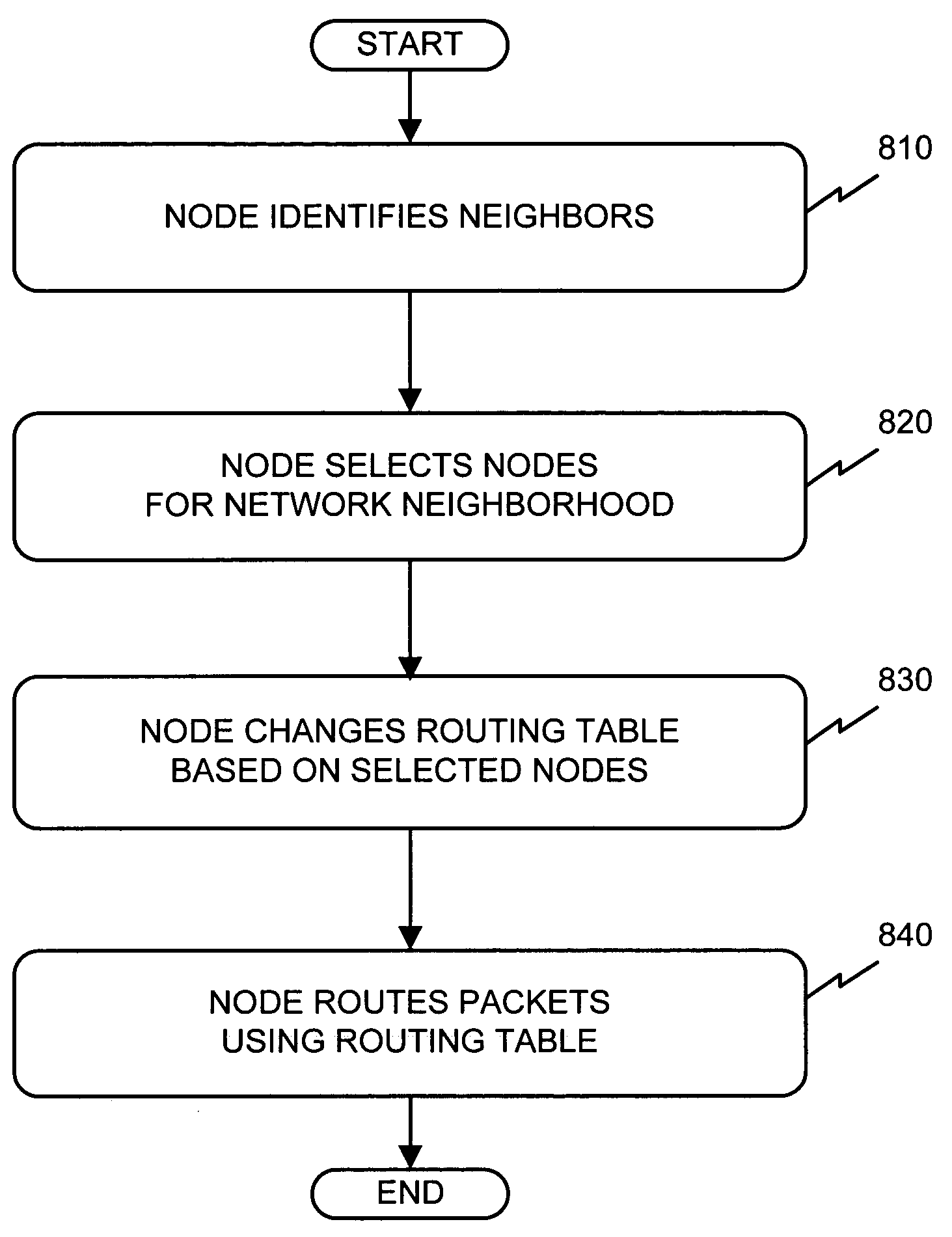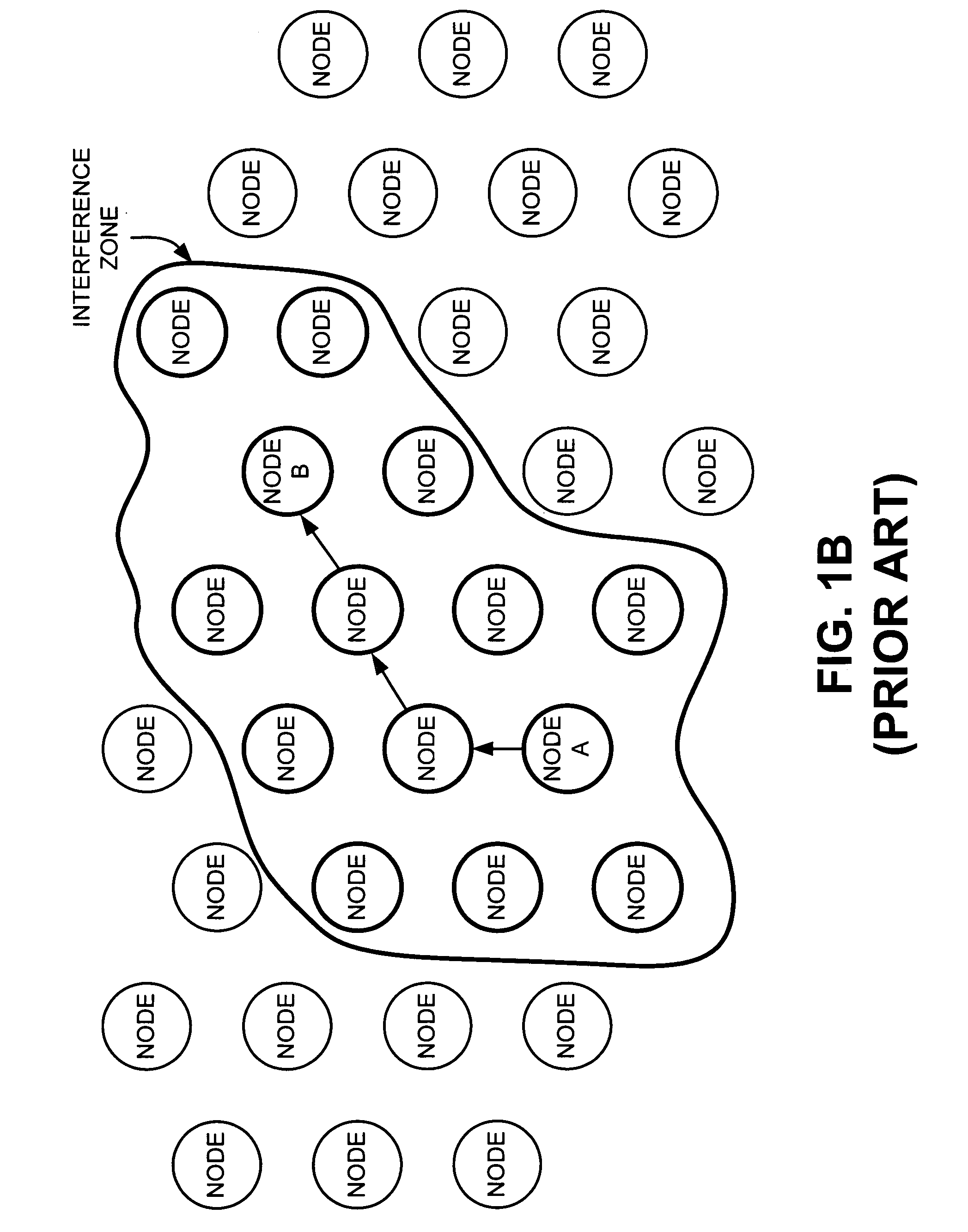Systems and methods for creating wireless small world networks
a wireless ad hoc network and wireless technology, applied in the field of communication systems, can solve the problems of increasing the end-to-end transmission delay through, difficult to find a solution to this problem, and high end-to-end delay
- Summary
- Abstract
- Description
- Claims
- Application Information
AI Technical Summary
Benefits of technology
Problems solved by technology
Method used
Image
Examples
Embodiment Construction
[0031]The following detailed description of the invention refers to the accompanying drawings. The same reference numbers in different drawings identify the same or similar elements. Also, the following detailed description does not limit the invention. Instead, the scope of the invention is defined by the appended claims and equivalents.
[0032]Systems and methods consistent with the present invention provide a small world network that has a number of nodes that include directional antennas in addition to, or instead of, the conventional omni-directional antennas used in wireless ad hoc networks. These directional antennas permit directed, long distance RF links to create “giant steps” across the network. Taken as a whole, the introduction of even a small number of nodes with directional antennas in a wireless ad hoc network may drastically reduce the network diameter. The network diameter may be defined as the maximum number of hops that a packet must take to cross the network from ...
PUM
 Login to View More
Login to View More Abstract
Description
Claims
Application Information
 Login to View More
Login to View More - R&D
- Intellectual Property
- Life Sciences
- Materials
- Tech Scout
- Unparalleled Data Quality
- Higher Quality Content
- 60% Fewer Hallucinations
Browse by: Latest US Patents, China's latest patents, Technical Efficacy Thesaurus, Application Domain, Technology Topic, Popular Technical Reports.
© 2025 PatSnap. All rights reserved.Legal|Privacy policy|Modern Slavery Act Transparency Statement|Sitemap|About US| Contact US: help@patsnap.com



